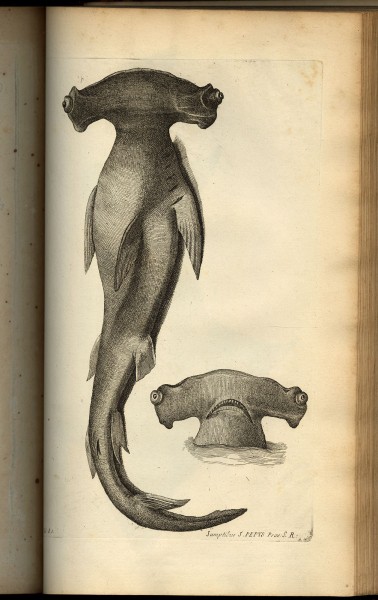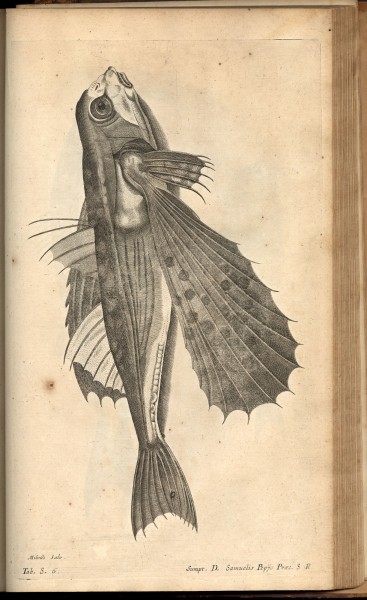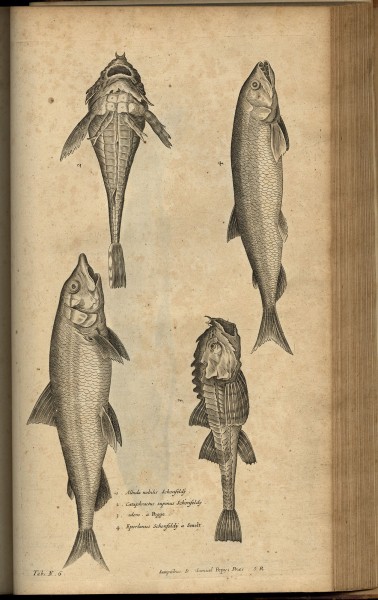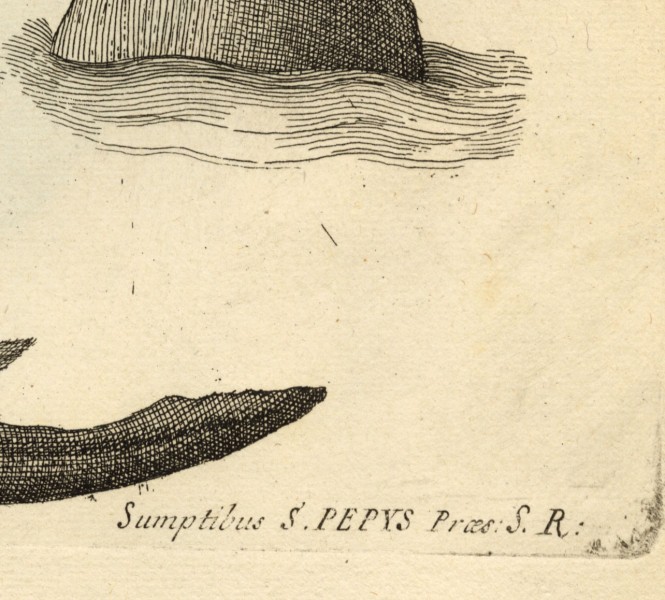Early Natural Philosophy at the Library Company: Francis Willughby Gets his Due
By Ann Nista
Illustrations from Willughby, Francis. De Historia Piscium Libri Quatuor. Oxford: Sheldonian Theatre, 1686.
After centuries in relative obscurity, Francis Willughby (1635-1672) finally is being given his due as one of the pioneers of modern science, and the Library Company of Philadelphia is a rich repository of his work. The 17th-century naturalist is the subject of a new biography, The Wonderful Mr. Willughby: The First True Ornithologist, by Tim Birkhead (Bloomsbury Press, 2018).
Willughby’s contribution was so undervalued till recently that a late 20th-century edition of the Encyclopaedia Britannica has no entry at all for Francis Willughby. In contrast, that same publication dedicates five paragraphs to Willughby’s friend and collaborator, John (Wray) Ray. That entry states that “Ray’s zoological works were characterized by Georges Cuvier as ’the basis of all modern zoology.’” It goes on to say that “The bases for the natural classification of fishes were laid in Francesci Willughbeii . . . Historia Piscium (1686), wherein the major share of the work was apparently that of Ray.” In fact, Tim Birkhead’s research indicates that Ray’s principle interest was botanical and that he published the Ornithologie, Historia Piscium, and his own History of Insects to fulfill a promise to Willughby. Furthermore, these works by Ray were based upon Willughby’s notes. Though Ray certainly deserves recognition for producing these volumes, to credit him with the “major share of the work” is perhaps giving short shrift to the friend he was trying to honor through their publication.
So, who was this man until recently relegated to being a footnote to history? Francis Willughby was the first naturalist to undertake a systematic study of birds and fish. His classification system is believed to be the basis of the avian section of Linnaean classification. He was also one of the first to attempt to create a complete catalog of all known birds, and the first to challenge Aristotle’s sometimes incorrect assumptions of birds’ habits, basing his new conclusions on careful observation. Willughby died young. His major works, Ornithologiæ Libri Tres and De Historia Piscium, were published posthumously (in Latin) by his tutor and collaborator, John Ray. An English translation of his Ornithologiæ was published two years after the Latin edition, under the name The Ornithology of Francis Willughby. Though Willughby’s history of insects never was published, it is apparent that his notes were used extensively in John Wilkins’s Essay towards a Real Character (1668) and John Ray’s Methodus Insectorum (1705) and Historia Insectorum (1710). In fact, in his introduction to Essay towards a Real Character, John Wilkins acknowledges Willughby’s special assistance with the tables on animals and John Ray’s on plants.
Both Willughby’s Ornithologiæ and his Piscium are richly illustrated with copperplate engravings. In De Historia Piscium, the publication of the plates was underwritten by various members of the Royal Society of London, including Christopher Wren and Samuel Pepys. Neither work was illustrated entirely by Willughby or Ray. While many of the illustrations of the Historia Piscium were Francis Willughby’s, Ray had to resort to depictions of birds and fish from other sources for those works. Fortunately, as Willoughby and Ray had travelled through Europe, they purchased drawings, paintings, and illustrated books depicting birds and fish. Among these was an unpublished book by Leonard (Leonhard) Baldner of Strassburg, with paintings by Johann Georg Walther, of which only five hand-made copies are known to exist. The work of Willoughby and Ray, then, served to preserve and join together the art of numerous contributors, some of whose creations might otherwise have been lost to us.
Both The Ornithology of Francis Willughby and De Historia piscium are in the Library Company’s collection. John Ray’s and John Wilkins’ books also are available at the Library Company.
Detail from illustration in Willughby, Francis. De Historia Piscium Libri Quatuor. Oxford: Sheldonian Theatre, 1686.
In the Library Company’s collection:
Birkhead, Tim. The Wonderful Mr. Willughby: The First True Ornithologist. Bloomsbury Press, 2018.
Philosophical letters between the Late Learned Mr. Ray and Several of his Ingenious Correspondents, … To Which are Added Those of Francis Willughby Esq, London: printed by William and John Innys, 1718.
Ray, John. Historia Insectorum. London: A.& J Churchill, 1710. The text of Ray’s Methodus Insectorum of 1705 is reprinted as a prolegomena to this work.
Ray, John. Observations Topographical, Moral, & Physiological; Made in a Journey through Part of the Low-Countries, Germany, Italy, and France … Whereunto is Added a Brief Account of Francis Willughby Esq; His Voyage through a Great Part of Spain. London: printed for John Martyn, printer to the Royal Society, at the Bell in St. Paul’s Church-yard, 1673.
Wilkins, John. An Essay towards a Real Character, and a Philosophical Language. London: printed for Sa: Gellibrand, and for John Martyn, printer to the Royal Society, 1668.
Willughby, Francis. De Historia Piscium Libri Quatuor. Oxford: Sheldonian Theatre, 1686.
Willughby, Francis. The Ornithology of Francis Willughby of Middleton in the County of Warwick Esq; fellow of the Royal Society. London: printed by A. C. for John Martyn, printer to the Royal Society, at the Bell in St. Paul’s Church-Yard, 1678.
Other resources:
Baldner, Leonard. Vogel, Fisch- und Thierbuch. 1666.
Harrington, Kat. “Pepys and the Royal Society.” 17 December 2015. https://blogs.royalsociety.org/history-of-science/2015/12/17/pepys-royal-society/
Ogilvie, Brian W. “Attending to insects: Francis Willughby and John Ray.” Notes and Records of the Royal Society of London, December 20, 2012, 66(4): 357–372. Published online October 10, 2012. https://www.ncbi.nlm.nih.gov/pmc/articles/PMC3594893/
“Ray (Wray), John”, Encyclopaedia Britannica, v.18, Encyclopaedia Britannica, Inc., 1973.
“Willughby, Francis (1635-1672)”, pp. 54-57, Dictionary of National Biography, 1885-1900, Volume 62 by George Simonds Boulger in Wikisource: https://en.wikisource.org/wiki/Willughby,_Francis_(DNB00)






